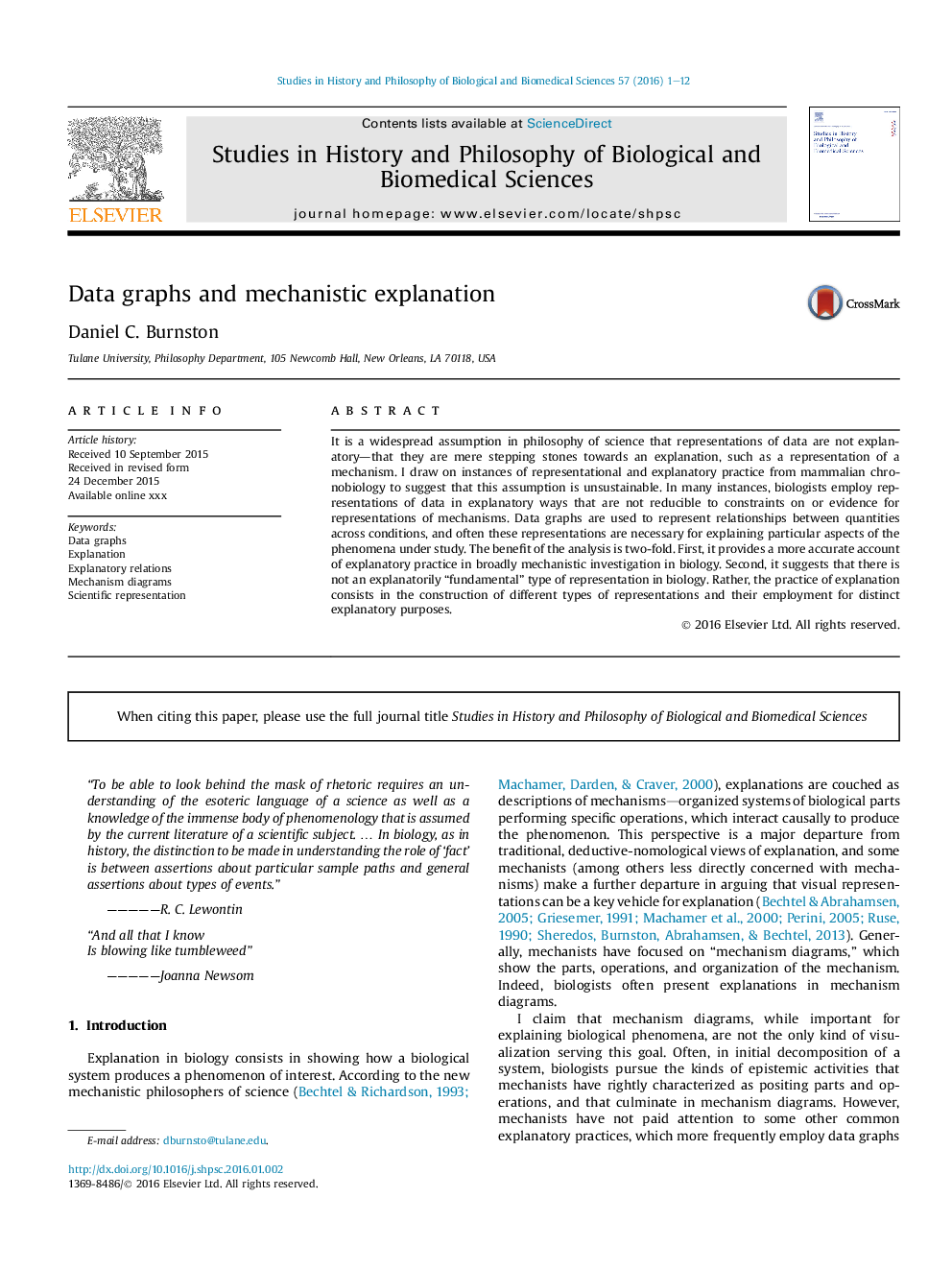| Article ID | Journal | Published Year | Pages | File Type |
|---|---|---|---|---|
| 7552211 | Studies in History and Philosophy of Science Part C: Studies in History and Philosophy of Biological and Biomedical Sciences | 2016 | 12 Pages |
Abstract
It is a widespread assumption in philosophy of science that representations of data are not explanatory-that they are mere stepping stones towards an explanation, such as a representation of a mechanism. I draw on instances of representational and explanatory practice from mammalian chronobiology to suggest that this assumption is unsustainable. In many instances, biologists employ representations of data in explanatory ways that are not reducible to constraints on or evidence for representations of mechanisms. Data graphs are used to represent relationships between quantities across conditions, and often these representations are necessary for explaining particular aspects of the phenomena under study. The benefit of the analysis is two-fold. First, it provides a more accurate account of explanatory practice in broadly mechanistic investigation in biology. Second, it suggests that there is not an explanatorily “fundamental” type of representation in biology. Rather, the practice of explanation consists in the construction of different types of representations and their employment for distinct explanatory purposes.
Keywords
Related Topics
Life Sciences
Agricultural and Biological Sciences
Agricultural and Biological Sciences (General)
Authors
Daniel C. Burnston,
